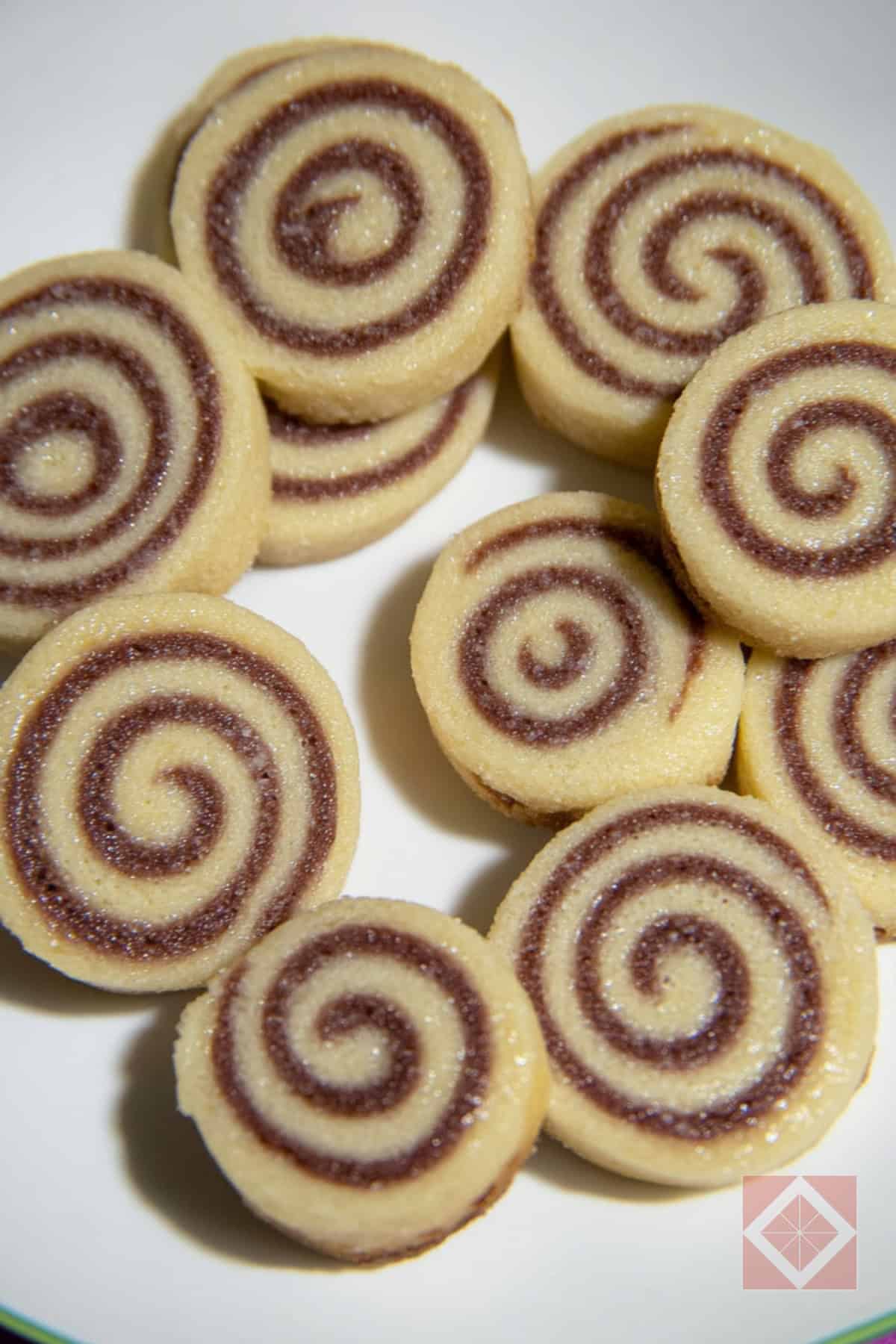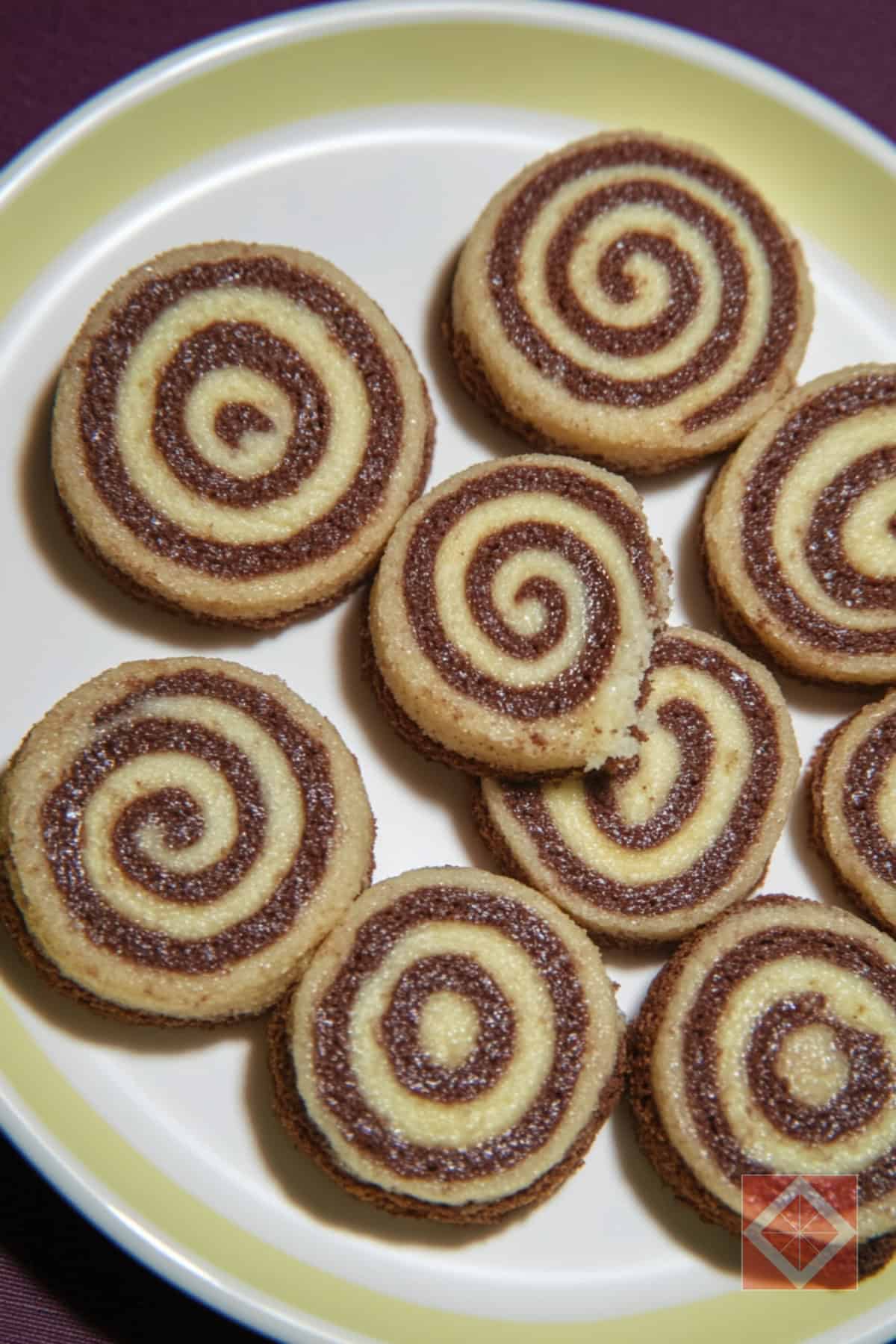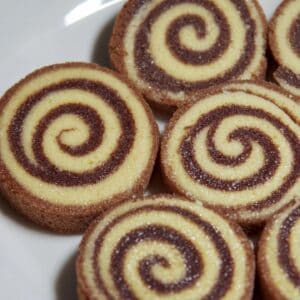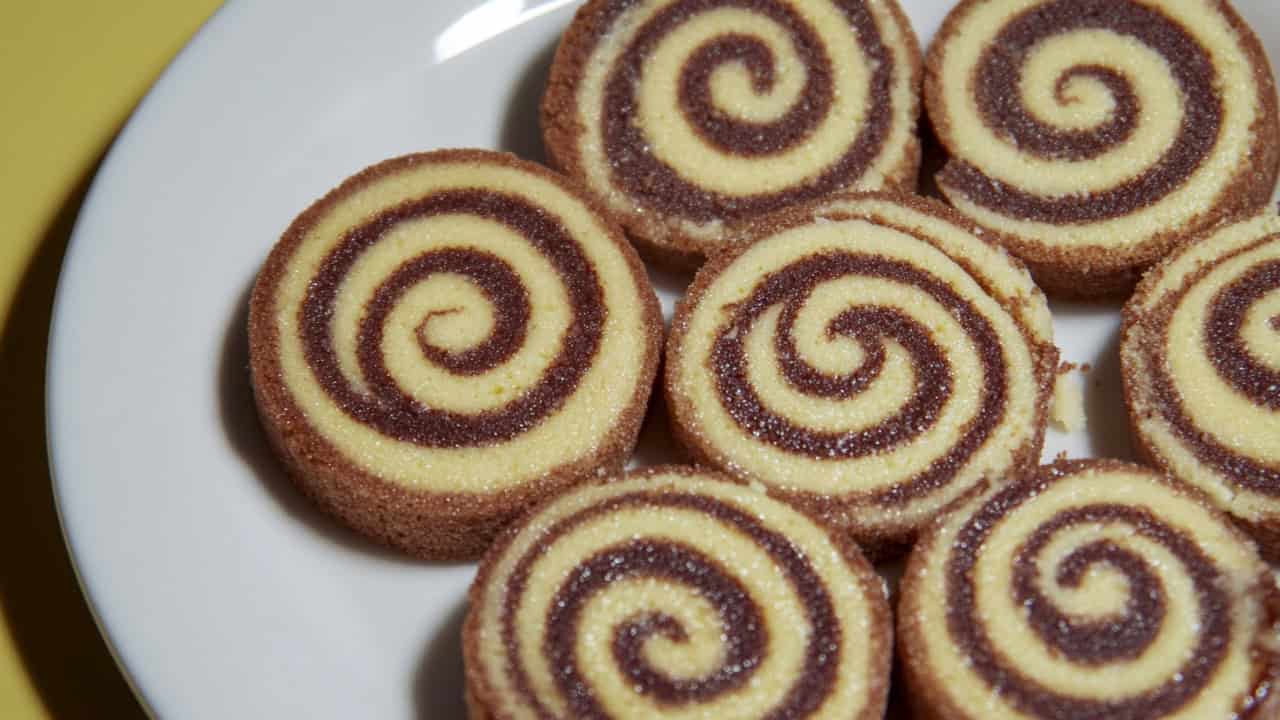Some desserts have a way of transporting people back in time, and icebox pinwheels are one of them. These elegantly swirled cookies were a staple in 1930s kitchens, thanks to the rise of home refrigeration.
With refrigerators—then called iceboxes—becoming more common, bakers could prepare dough ahead of time and chill it for perfect baking results.
This era gave birth to a variety of icebox cookies, including the distinctive pinwheel design, which remains a favorite for its balance of flavors and visual appeal.
The Appeal of Icebox Cookies

Icebox cookies were revolutionary in the 1930s, providing home bakers with an easy way to create uniform, beautifully shaped cookies with minimal effort.
These cookies are made by chilling the dough thoroughly before slicing and baking, which prevents excessive spreading and ensures a consistent texture. The process also allows the flavors to deepen, making each bite more satisfying.
Pinwheel cookies stand out among old recipes due to their signature spiral pattern, which adds a touch of elegance to any dessert table. They also offer a delightful contrast in flavors, with a rich chocolate swirl complementing the delicate vanilla dough.
Their eye-catching design makes them a popular choice for special occasions and holiday gatherings.
Baking Tips for Perfect Pinwheels
Achieving flawless pinwheel cookies requires attention to detail, particularly when rolling and assembling the dough. Here are some essential tips:
- Chill the Dough Properly: The key to well-defined swirls lies in thoroughly chilling the dough. A minimum of four hours is recommended, but overnight chilling yields even better results.
- Roll Evenly: Both dough layers should be rolled to an equal thickness to ensure a consistent pattern. Using a ruler for measurements can help maintain uniformity.
- Use Parchment Paper: Rolling the dough between sheets of parchment paper prevents sticking and makes handling easier.
- Slice with a Sharp Knife: A clean, sharp knife ensures neat slices without crushing the delicate spirals. Wiping the blade between cuts helps maintain precise edges.
- Watch the Baking Time: These cookies bake quickly, usually in under 10 minutes. Keeping a close eye on the oven prevents overbaking and preserves their tender texture.
Customizing the Recipe
While the traditional combination of vanilla and chocolate is timeless, there are plenty of ways to personalize icebox pinwheels:
- Flavor Variations: Swap vanilla extract for almond or peppermint for a different taste profile. Adding a hint of espresso powder to the chocolate layer enhances its richness.
- Color Contrast: To create a festive version, tint the vanilla dough with food coloring. Red and white pinwheels make perfect holiday treats.
- Add a Crunch: Finely chopped nuts, such as pecans or walnuts, can be added to the chocolate dough for extra texture.
- Gluten-Free Option: A blend of almond and oat flour works well as a substitute for all-purpose flour. Adding xanthan gum helps maintain the dough’s structure.
Why These Cookies Are Still Loved Today

Despite nearly a century passing since their rise in popularity, icebox pinwheels remain a favorite among home bakers. Their nostalgic appeal, ease of preparation, and striking presentation make them a go-to choice for cookie platters.
As with many old recipes, they connect generations, allowing families to pass down baking traditions and enjoy a taste of the past.
These cookies are perfect for meal prep since the dough can be made days in advance, ready to slice and bake when needed. They’re also an excellent option for busy schedules, allowing bakers to enjoy fresh, homemade cookies without last-minute stress.
Icebox pinwheels showcase the ingenuity of the 1930s, when practical solutions led to some of the most beloved baked goods.

Old-Fashioned Icebox Pinwheels (1930s Recipe)
Ingredients
- ½ cup butter softened
- ½ cup granulated sugar
- 1 large egg yolk
- 2 teaspoons vanilla extract
- 1¾ cups all-purpose flour
- ½ teaspoon salt
- 2 tablespoons whole milk
- 1 ounce unsweetened chocolate melted
Instructions
- In a mixing bowl, beat together the butter and sugar until light and creamy. Add in the egg yolk and vanilla, blending until smooth.
- In a separate bowl, whisk together the flour and salt. Gradually add the dry mixture to the creamed butter mixture, alternating with the milk, until a soft dough forms.
- Divide the dough into two equal portions. Stir the melted chocolate into one half until fully incorporated, creating a chocolate dough. For a uniform texture, kneading lightly with your hands may help. Refrigerate briefly to firm up slightly.
- Roll each dough portion on a lightly floured surface into a rectangle, approximately 10×12 inches. Trim any uneven edges to ensure the dough layers match in size.
- Place the plain dough sheet on top of the chocolate one, slightly offset so that one longer edge extends about ½ inch beyond the chocolate layer.
- Starting from the edge opposite the overhang, roll the dough tightly into a log, similar to a jelly roll. Wrap in wax paper and refrigerate for at least 4 hours, or overnight for best results.
- Preheat the oven to 350°F. Using a sharp knife, slice the chilled dough into ¼-inch rounds, wiping the knife clean between cuts. Arrange the cookies cut-side down on a greased or parchment-lined baking sheet.
- Bake for 8 to 10 minutes, or until the edges are set. Allow the cookies to cool briefly on the baking sheet before transferring them to a wire rack to cool completely.
Notes
- Chilling the dough thoroughly prevents spreading and helps maintain the pinwheel design.
- If the dough becomes too soft while rolling, place it in the refrigerator for a few minutes before continuing.
- For a sweeter variation, add a tablespoon of powdered sugar to the chocolate dough.
- These cookies store well in an airtight container and are perfect for make-ahead treats.
Nancy has been a plant person from an early age. That interest blossomed into a bachelor’s in biology from Elmira College and a master’s degree in horticulture and communications from the University of Kentucky. Nancy worked in plant taxonomy at the University of Florida and the L. H. Bailey Hortorium at Cornell University, and wrote and edited gardening books at Rodale Press in Emmaus, PA. Her interests are plant identification, gardening, hiking, and reading.

